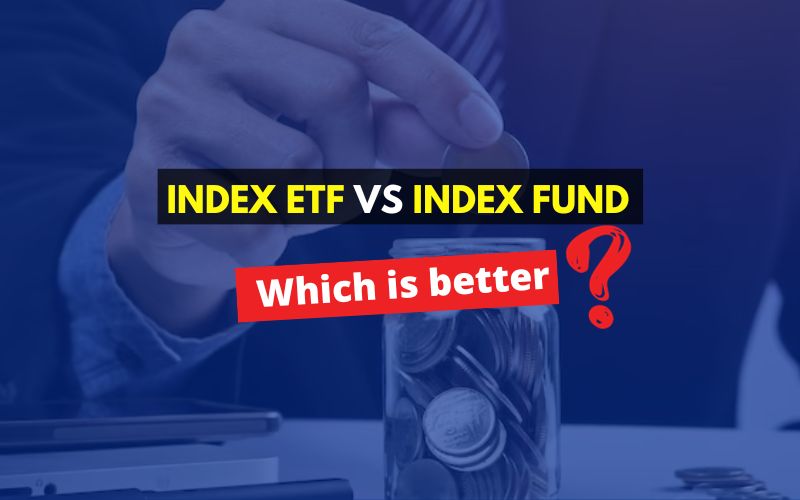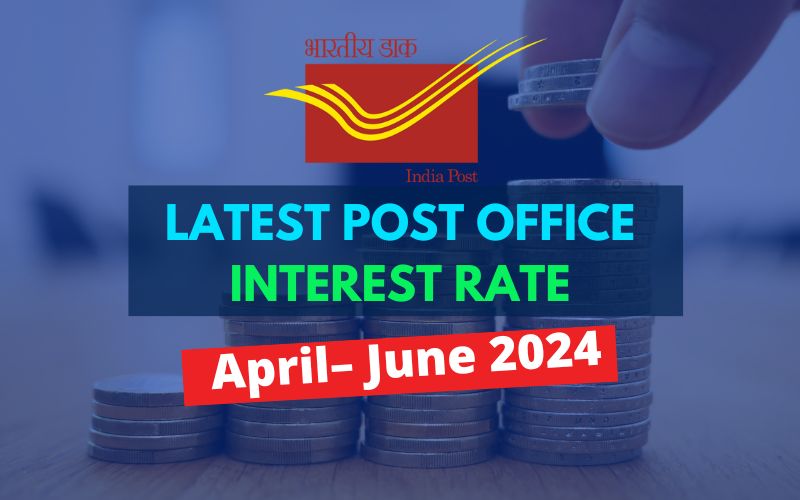Understanding active vs passive investing strategy is essential to comprehending Index ETF vs Index Fund. Investing in an index fund or an ETF is a passive investment strategy. In this article, we will focus on passive (Index ETF vs Index Fund) investing, its benefits, and which is better goal-based investing.

Table of Contents
What is a Passive Investing?
Passive investing is an investment strategy that seeks to replicate the performance of a specific market index or benchmark rather than actively selecting individual securities to outperform the market. The primary goal of passive investing is to achieve returns that closely mirror the overall performance of a chosen index.
Regarding passive investing, investors have two options: ETFs and Index Funds.
Benefits of Passive Funds – ETFs and Index Funds
Passive funds, often in the form of index funds or exchange-traded funds (ETFs), have gained popularity for several reasons. Here are some key benefits associated with investing in passive funds:
- Cost Efficiency: Passive funds typically have lower management fees than actively managed funds. This cost efficiency allows investors to keep more of their returns.
- Transparency: The holdings and methodology of the underlying index are transparent, enabling investors to know exactly what assets they own. This transparency enables trust and informed decision-making.
- Tax Efficiency: Passive funds generally experience lower buying and selling in their portfolios compared to actively managed funds. Hence, lower tax implications for investors.
- Reduced Managerial Risk: Since passive funds aim to replicate an index rather than outperform it, they eliminate the risk associated with individual fund manager decisions. However, market risk continues.
- Time Savings: Passive investing requires less active monitoring and decision-making than active strategies. Investors can save time by avoiding the need to analyze and adjust their portfolios constantly.
- Alignment with Long-Term Goals: Passive funds align well with a long-term investment approach. Investors prioritizing a “buy and hold” strategy can benefit from passive fund growth potential.
These benefits collectively make passive funds attractive for investors seeking simplicity, transparency, and a cost-effective way to invest in the market.
Difference Between Index ETF vs Index Fund
An Index ETF (Exchange-Traded Fund) and an Index Fund are both investment tools designed to replicate the performance of a specific market index. Still, they differ in their structure and the way they are traded.
✓ Index ETF (Exchange-Traded Fund)
- Market Trading: An Index ETF is traded like an individual stock on stock exchanges. Investors can buy and sell ETF units throughout the trading day at market prices, just like any other stock.
- Intraday Liquidity: Index ETFs provide intraday liquidity, allowing investors to execute trades at any point during market hours. This real-time pricing benefits those who want to manage the passive investment actively.
- Creation and Redemption Process: Index ETFs use a creation and redemption process facilitated by authorized participants.
- Flexibility: Index ETFs offer flexibility in trading options, such as limit orders, stop orders, and margin trading. Investors can employ various trading strategies to achieve their objectives.
- Unit Investment: Index Index ETFs are to be bought unit-wise. Your minimum investment required is the value of 1 unit.
- Intraday Performance Monitoring: Investors can monitor the intraday performance of an ETF and react to market changes by buying or selling units throughout the trading day.
✓ Index Fund
- Traded at NAV: Index funds are not traded on an exchange like ETFs. Instead, they are bought or sold at the end of the trading day at the net asset value (NAV) price. You can buy Index funds any day and any time.
- Daily Trading Limit: Index funds can be bought anytime on any day. However, NAV can be allocated only at the close of the trading day, regardless of any market movements that may occur throughout the day. This lack of intraday trading can be a limitation for investors who seek immediate execution.
- Purchase and Redemption Through AMC: Investors buy or redeem units of an index fund directly through the AMC (Asset Management Company) either through a broker (if invested in a regular plan) or directly to the fund management company (if invested in a direct plan).
- Management Style: Index funds are often associated with a buy-and-hold investment strategy. Investors buy units of the fund with the intention of holding them for the long term, reflecting the performance of the underlying index.
- Minimum Investment Requirements: Index funds may have minimum investment requirements that can be higher than those of ETFs. This might make them less accessible to some investors, particularly those with smaller investments.
- End-of-Day Performance Monitoring: Investors in index funds can only assess their investment performance at the end of the trading day, as the purchase or sale of units is based on the closing NAV.
| Differences Between Index Funds and Index ETF | ||
| Particulars | Index fund | Index ETF |
| Underlying | An index or a modified version of an index | An index or a modified version of an index |
| Investment Mode | Just like mutual funds | Just like stocks |
| Purchase Time | Any day and any time | During trading hours, only |
| Minimum investment | Depends on the fund. Generally, it’s Rs 100 or Rs 500. | 1 unit |
| Requisites | KYC | KYC and a demat/trading account |
| Liquidity | Anytime with no exit load | Depends on the ETF. It can have low liquidity, too. |
What Index ETF vs Index Fund have in common
Index ETF vs Index Fund have a lot in common. Let’s explore one by one:
1. Passive Management
Both index funds and ETFs operate on a passive management strategy rather than relying on active stock picking. They aim to replicate the returns of a chosen market index.
2. Objective of Tracking an Index
The primary goal of both index funds and ETFs is to mirror the performance of a specific market index, whether it’s a broad market index like the Nifty 50 or a sector-specific index.
3. Diversification
Both investment vehicles provide investors with instant diversification by holding a basket of securities representing the chosen index’s composition. This diversification helps spread risk across different assets.
4. Transparency
Index ETF and Index fund offer transparency in terms of their holdings. Investors can readily access information about the securities included in the portfolio and the weightings assigned to each.
5. Low Cost
Index ETF vs Index fund generally have lower expense ratios than many actively managed funds. The passive management style reduces the need for extensive research and trading, contributing to cost efficiency.
6. Buy-and-Hold Strategy:
Both investment types often follow a buy-and-hold strategy. Investors using these vehicles typically aim to hold their positions for the long term to capture the overall growth of the market.
While index funds and ETFs may differ in their structures and the way they are traded, they share fundamental attributes such as passive management, a focus on tracking specific indices, diversification, and cost efficiency.
Are ETFs or Index Funds Safer?
When compared to active funds, passive funds (ETFs or Index Funds) are comparatively safer as they eliminate the fund manager risk. However, it continues to be exposed to market risk and hence falls under risk investment.
Where Should You Invest – Index ETF versus Index Fund?
To understand better, we will explore the factors that impact the performance of an index fund or an Index ETF. These include expense ratio and tracking error.
(a) Expense Ratio
The expense ratio expresses how much you pay a fund house as a percentage of your investment every year to manage your money.
For example, if you invest Rs. 20,000 in a fund with an expense ratio of 1%, then you are paying the fund Rs 200 a year to manage your money. An investor’s returns will reduce if the expense ratio is high. Hence, an investor should look for a scheme with a lower expense ratio, and investing in a Direct Plan is the best way to lower the expense ratio.
(b) Tracking Error
Tracking error is the standard deviation of the return difference between an index mutual fund and its benchmark index. It quantifies how much the fund’s performance deviates from the index it is designed to emulate.
Causes of Tracking Error:
- 🔸Management Fees: The expense ratio and other fees associated with managing the fund can contribute to tracking errors. Higher fees can lead to underperformance compared to the index.
- 🔸Transaction Costs: Costs incurred from buying or selling securities within the fund’s portfolio can affect tracking errors. Frequent trading or higher transaction costs can contribute to deviations from the index.
- 🔸Cash Holdings: If the fund holds cash or uses sampling strategies instead of holding all the securities in the index, it can introduce a tracking error. Variations in cash levels or the choice of sampled securities can impact performance.
- 🔸Dividend Reinvestment: Differences in how dividends are reinvested, whether immediately or at set intervals, can contribute to tracking errors.
- 🔸Market Impact: The fund’s trading activities in the market, especially for less liquid securities, can cause tracking errors. Larger market impact from trades may result in deviations from the index.
Do Index ETF or Index Fund Have Better Returns?
Regarding returns, the choice between Index ETF vs index fund depends on individual preferences, investment strategies, and the investor’s specific goals.
If you are looking for goal-based financial planning, you must follow the buy-and-hold strategy for which index fund suits well, whereas if you believe in short-term strategy, go for ETFs. Both investment vehicles have the potential to provide competitive returns, and the decision should align with the investor’s overall financial plan and risk tolerance.
Conclusion
While both Index ETFs and Index Funds track market indices, their key distinctions lie in their trading mechanisms, liquidity, and the flexibility they offer to investors. ETFs provide intraday trading and flexibility, while index funds are transacted at the end of the day and are associated with a more traditional buy-and-hold approach. Their choice often depends on an investor’s preferences, trading style, and financial goals.








